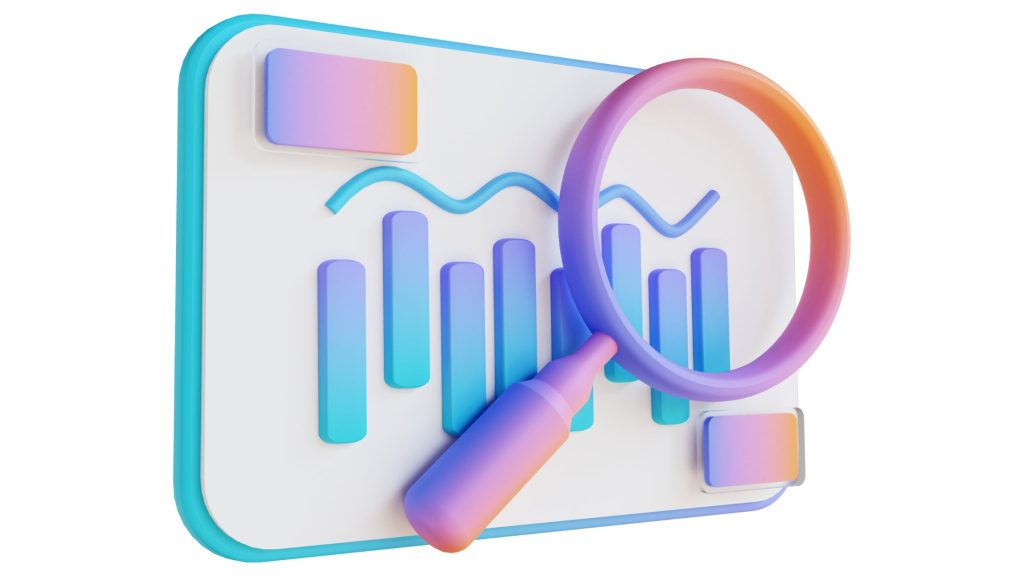When it comes to respondents easily answering questions in this format, the 5-Point Likert scale analysis is commonly used. They don’t have to think too hard or write a long response. They merely have the option of selecting from already provided replies. It is also simple to understand.
The Likert Scale asks how strongly someone agrees or disagrees with a specific statement or issue. It is often composed of a 5-point rating scale extending from one extreme to the other, with a neutral point in the middle.
For example a scale like this:
| Strongly Disagree | 1 |
| Disagree | 2 |
| Neutral | 3 |
| Agree | 4 |
| Strongly Agree | 5 |
How do you examine the answers after receiving responses to these types of questions? To analyze data from the Likert scale, you need a specific visual that produces results in the shortest period of time.
| Quick Answer |
| The 5-Point Likert Scale is a commonly used method for collecting and analyzing data based on respondents’ agreement or disagreement with statements. It consists of a 5-point rating scale with options ranging from strongly disagree to strongly agree. To analyze the responses, a Likert Scale Chart can be created to visualize and interpret the data efficiently. The 5-point Likert scale offers advantages such as better data distribution and ease of response, but it may not capture the full range of opinions and can be too restrictive in some cases. |
What is a Likert Scale?
You’ve probably seen several polls in which respondents simply agree or disagree with the statements/questions presented. This is referred to as a Likert Scale question.
Definition: A Likert Scale is an equally spaced scale on which respondents select their level of agreement or disagreement. It can be used by businesses to find out whether a consumer is satisfied or dissatisfied with a particular product or service.
How to do 5-Point Likert Scale Analysis: Video Tutorial
In the video below, you will learn how to analyze and interpret results from the 5-Point Likert Scale, which is simple to construct as well as appealing to stakeholders.
How to do a 5-Point Likert Scale Analysis?
The 5-Point Likert Scale analysis is straightforward. So don’t expect anything difficult. As previously stated, the chart asks respondents to agree or disagree with a specific subject at various levels. You must understand how to analyze a 5-point Likert scale as a result of this.
As a result, the chart includes a 5-point rating scale in straight bars from one point to the next. In the center of the chart, there is also a neutral column that illustrates the neutrality of some of your respondents. You can record the respondents’ responses to your interview questions at such levels. It is critical to use a spreadsheet tool to record such survey data.
Eager to know how to analyze a 5-point Likert scale right? You must focus on how you can perform a 5-point Likert scale analysis. So let’s get started.
Analyzing data with a 5-point Likert scale requires you to create a chart that shows the survey data in the most meaningful way, and that chart is the Likert Scale Chart. However, neither Microsoft Excel nor Google Sheets support Likert Scale Charts but don’t worry, there is a solution, which we will discuss in the following part.
How to Create Likert Scale Chart for Analysis and Interpretation of Survey Data

Let us look at an example of how you visualize your survey data using the Likert Scale for analyzing and understanding results.
Sarah has a business that sells skincare products. She’s curious about how her products are doing with customers. She requires the information in order to optimize the products further to meet the needs of his clients.
As a result, she develops a survey with a 5-point Likert scale. Her survey comprised the following questions:
- Customized product virtual models are realistic.
- The data for customized components are identified.
- The range of customized products is satisfactory.
- Image rotation is handy for viewing a product from various perspectives or angles.
She created a table with statistics as shown below:
Stat Table
| Question | Rating | Count |
| The virtual models of customized products are realistic | 1 | 324 |
| The virtual models of customized products are realistic | 2 | 176 |
| The virtual models of customized products are realistic | 3 | 230 |
| The virtual models of customized products are realistic | 4 | 270 |
| The virtual models of customized products are realistic | 5 | 0 |
| The information about customized components is clearly identified | 1 | 138 |
| The information about customized components is clearly identified | 2 | 186 |
| The information about customized components is clearly identified | 3 | 176 |
| The information about customized components is clearly identified | 4 | 230 |
| The information about customized components is clearly identified | 5 | 270 |
| The variety of customized products is satisfactory | 1 | 0 |
| The variety of customized products is satisfactory | 2 | 138 |
| The variety of customized products is satisfactory | 3 | 186 |
| The variety of customized products is satisfactory | 4 | 176 |
| The variety of customized products is satisfactory | 5 | 500 |
| Image rotation is useful for viewing products from different angles | 1 | 5 |
| Image rotation is useful for viewing products from different angles | 2 | 100 |
| Image rotation is useful for viewing products from different angles | 3 | 146 |
| Image rotation is useful for viewing products from different angles | 4 | 116 |
| Image rotation is useful for viewing products from different angles | 5 | 420 |
Chart Analysis Breakdown
- She then installed the ChartExpo Extension and opened it by selecting Extensions from the Google Sheets interface.
- Then she inserted the aforementioned table onto the sheet and continued exploring ChartExpo on the right side of the screen.
- She opened ChartExpo and then clicked the ‘Add new chart’ option.
- Next, she selected the ‘Likert Scale Chart’.
- She then chose the sheet with her data.
- She used ‘Count’ as a metric and dimensions ‘Question’ and ‘Rating’.
- Then she hit the ‘Create Chart’ button.
- She then got her result
She was able to gain insight into her customers’ mindsets by using this chart. She could learn whether or not her consumers were satisfied with the product’s customization. This will boost Sarah’s confidence in her products. It will allow her to polish her skills and make the products more appealing to customers.
Following that, a 5-point Likert scale interpretation is the next obvious step. We will use the “Mode” method to improve our understanding of evaluating a 5-point Likert scale analysis.
READ ALSO:
- How to Print Gridlines in Excel Online
- How to Import Data into Excel Online
- How to get Excel Certified Online
- How to Access Excel Online
How to Analyze & Interpret Results from a 5 Point Likert Scale Data

As I said earlier, You can use the ‘Mode’ method for analyzing the most simple and basic data with a few responses. To complete your 5-point Likert scale interpretation, carefully follow the instructions.
- You must assign numbers from 1 to 5 on your scale. Depending on your ranking, you can set 1 to “very poor” and 5 to “excellent.”
- Create a table containing your findings. To identify your table, use headings on both axes.
Check that your ratings are on the opposite side of the table from the axis of your survey questions. This will make your Likert scale scoring and interpretation easier to understand.
- Then, highlight how frequently each rating appears.
- The highest occurring number can be obtained by calculating the average rating.
Using the logical steps, you can complete your 5-point Likert scale range interpretation.
So far, we’ve talked about point scales and the properties of the 5-point scale. We also learned more about analyzing and interpreting Likert scales. Which 5-point scale is best suited to our survey and Likert data? In the following section of the post, we will pick which of the 5-point Likert scale examples is ideal for our Likert survey.
5 Point Likert Scale Examples
There are different 5-point Likert scale examples available, including
- The 5-point Likert scale for measuring Agreement.
- Some 5-point Likert scales are for measuring Satisfaction
- Some for measuring Quality
- Others for measuring Importance, Frequency, and Likelihood.
This is a 5-point scale to measure agreement.
Q. How strongly do you agree or disagree with the following statement: “The customer service representative was knowledgeable and helpful.”
- Strongly disagree
- Disagree
- Neutral
- Agree
- Strongly Agree
Let’s look at a typical 5-point scale for measuring satisfaction.
Q. Please rate your level of satisfaction with the cleanliness of the facility.
- Very Dissatisfied
- Dissatisfied
- Neutral
- Satisfied
- Very Satisfied
Let’s look at a typical 5-point scale for measuring quality.
Q. How would you rate our product/service?
Very poor
Poor
Average
Good
Excellent
A Summary
Likert scale questions allow you to sample opinions and gather important data. It allows you to understand what your audience is thinking. You must occasionally ask these questions in order to chart a new course in your business.
You may have to ask it to find out where your brand stands with the consumers. Other times, it is to anticipate impending calamity and avert it as quickly as possible.
Whatever your purpose for asking the question, you need to know what others are thinking. You must ask questions to learn what other people are thinking. You must collect responses once you have asked questions.
Following that, you must go over the responses, comprehend popular opinion, and take appropriate action. The responses you collect are the data you require. The last three steps constitute the data analysis procedure.
Let me go over them again.
- Examine the responses (data).
- Identify popular opinion
- Take appropriate actions
Remember how we said that evaluating data is similar to attempting to solve a hard math problem? Take a look at those steps. Consider attempting to poll over 500 employees or 1,000 customers. It would take a long time and intense attention to complete it properly.
On the contrary, as a businessperson, you want to save time and energy. Furthermore, you are constantly bombarded with information, which lowers your attention span and easily distracts you. As a result, you require a method to complete all 3 steps of data analysis in a split second.
Advantages of Using a 5-Point Rating Scale
Consider the advantages of using a 5-point Likert scale for survey and interpretation scoring.
- Grading on a 5-point Likert scale results in better data distributions. Better data distributions are possible with a 5-point Likert scale range. This allows you to interview a large number of people and obtain their responses.
- Your responses will easily grasp the range of the 5-point Likert scale. The questionnaire you give to your respondents is simple. It has a neutral position that is simple to recognize and answer.
- The 5-point rating system can be used with a bigger audience. Responders can voice their ideas more quickly and honestly when they have fewer options. Because it presents fewer irrelevant options, a 5-point rating scale can be used efficiently with a bigger audience.
Disadvantages of Using a 5-Point Likert Scale
On the other hand, are the disadvantages of using a 5-point Likert Scale? Let us take a look.
- The 5-point scale cannot always measure all of the opinions on a subject. The 5-point scale may not always be sufficient to measure all of the feelings about a particular problem. For you to obtain accurate data, the respondents may require more ways to express themselves.
In some cases, respondents may find the 5-point scale too restricted. As a result, they make decisions that are either too hasty or excessively critical.
- A 5-point rating scale may not provide accurate results. The results may not fully reflect the range of responses you received in some circumstances. You can fall short of your survey objective. As a result, a 5-point Likert scale rating is unsuitable for accurate data retrieval.
Is the 5 Point Scale Right for You?
When measuring opinions on a difficult subject, you shouldn’t use a 5-point scale. For instance, while assessing a complex service or operation such as consumer engagement or shopping experience. In such a case, a broader range of opinions and information is required.
However, if you want to know how patients and visitors feel about the hospital’s cleanliness, a smaller set of options will suffice. Furthermore, higher sentiment levels prevent your respondents from gathering at the neutral point.
Respondents tend to be neutral when presented with options that do not accurately represent their feelings and ideas. Increasing the number of possibilities also results in more accurate attitudes and prevents unneeded data distortions.
People today are suffering from information overload. And this can have an impact on your audience’s reactions. As a result, this evidence suggests that the 5-point scale can keep your audience interested. It will also make it easier for them to evaluate the options and select the one that best fits their preferences.
Furthermore, the 5-point scale removes the desire to drift toward the neutral position. It also removes the impulse to keep the questions unsolved.
Types of Likert Scale

There are 3-point, 4-point, 5-point, 6-point, 7-point, and 9-point Likert scales. I know you are wondering, why are there so many, and do they all serve the same function?
Likert scales, as previously stated, are commonly employed to evaluate public opinion on a particular subject. However, the number of answerable options has a significant impact on the audience’s feelings while answering.
The point scales also have a significant impact on the type of data that will be collected. Overall, it will have an impact on the data insights.
Wondering How?
Humans think and react in a variety of ways. With too few options, they may feel constrained and suffocated. At the same time, too many alternatives could quickly overwhelm them.
With 3-point scales, the most common alternatives are High-Medium-Low. This simply asks responders to pick either side of the pole or to remain neutral. While this may appear to be a simple task, it merely scratches the surface of the opinions.
It makes no attempt to fully comprehend the respondents’ ideas and feelings. The evenness of the scale makes it difficult to take a neutral viewpoint on the 4 Point scale. Because people have a desire to be polite, respondents may leave the questions unanswered. That is for the lower numbers.
They analyze further the genuine emotions and feelings of the respondents for scales as large as the 7-point or 9-point scale. Respondents lose interest faster when presented with an array of questions with so many options. It’s like having to choose between seven options in 20 various places. It could be entertaining at first.
Then you simply want to move on to something more exciting. As a result, the 5-point Likert scale is typically the most successful and respondent-friendly Likert scale.
Frequently Asked Questions
The 5-point Likert-type scale is a type of Likert scale where respondents agree or disagree with questions on five levels. This scale includes a neutral option where respondents can say that they are neutral about a specific topic.
The 5-point Likert scale has five response possibilities, two extreme sides, and a neutral option. A 5-point rating scale for measuring satisfaction would look like this: Very Satisfied, Satisfied, Neutral, Dissatisfied, and Very Dissatisfied.
Likert scales may be a suitable fit when measuring attitude, belief, or behavior. It is typically used to rate people’s opinions by asking how strongly they agree or disagree with a certain subject or statement. “Strongly disagree, Disagree, Neutral, Agree, Strongly agree” is a typical scale.
A Likert Scale is made up of a sequence of statements. Your responders will indicate whether they agree or disagree with a statement. The next step is to visualize and analyze the data. Interpreting entails gaining insights from the analysis.
The Likert Scale is a type of scale used to measure people’s feelings. On this scale, respondents are asked to rate contract-level products.
5-points Respondents grasp the Likert scale much better. Respondents define their level of agreement in a statement using a 5-point Likert scale. The next level of data distribution is represented by the 5-point Likert scale. Which is ideal for a comprehensive analysis of how customers feel.
If you want a particular response, this 4-point Likert scale is a fantastic choice because it does not display neutral results, only negatives, and positives. You can, for example, have highly agree, agree, disagree, and strongly disagree. It’s also known as a forced Likert scale chart.
Conclusion
Data analysis can be as tough as rocket science. Before you begin analyzing data, you must first ensure that you have a meaningful dataset. This can be challenging due to people’s circumstances and feelings.
The Likert scale survey analyzes people’s feelings about a topic. Some folks, though, may be too nice to give you an honest evaluation. Some people may be so caught up with information that they take your survey aimlessly.
The 5-point scale, on the other hand, is a refuge for many experts. It gets right to the point without boring or overwhelming your respondents.


